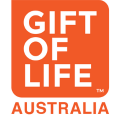At birth, the umbilical cord and the placenta have historically been discarded as biological waste. However, the cord blood is very rich in stem cells which can be used to save a life especially that of a child. These blood-forming stem cells can be collected at delivery and subsequently matched and transfused into those who have life-threatening disorders such as leukemias, immune deficiency syndromes, aplastic anaemias and other blood diseases.
Prior to giving birth, the parents need to discuss with, and inform, their obstetrician and midwife/labour team beforehand. This is because the blood needs to be drained from the cord and placenta within a very short time at the baby’s birth in order to be useful. A specialist technician needs to be on hand in order to facilitate the collection.
Any mother between 18 and 45 years and in good health can elect to sign the medical questionnaire and consent forms. The cord blood can be stored in a private cryobank for their family’s use or donated to the AusCord blood bank for use in the treatment of the blood cancers of people in the general community.
A specialist technician needs to be on hand in order to facilitate the collection.
